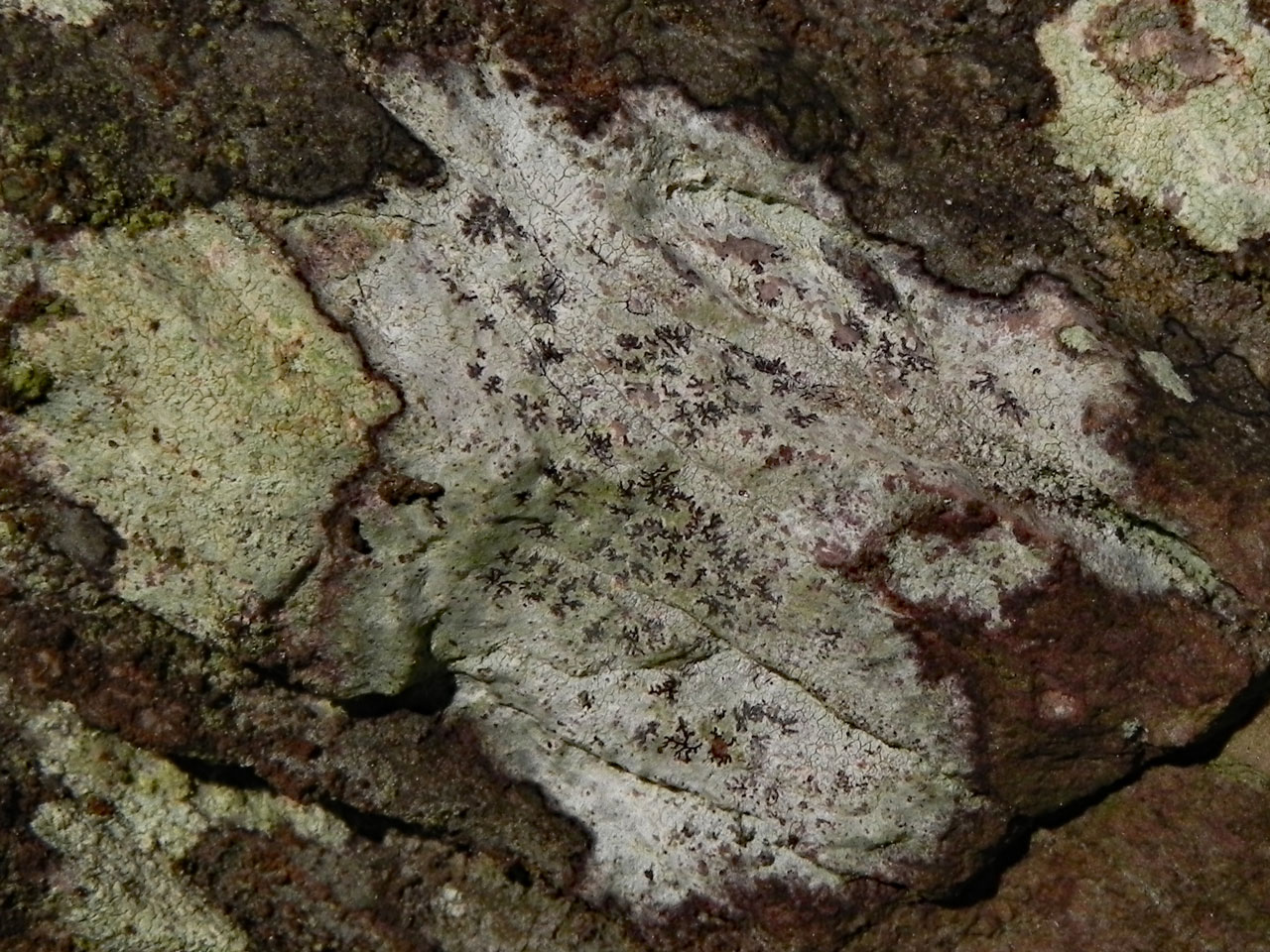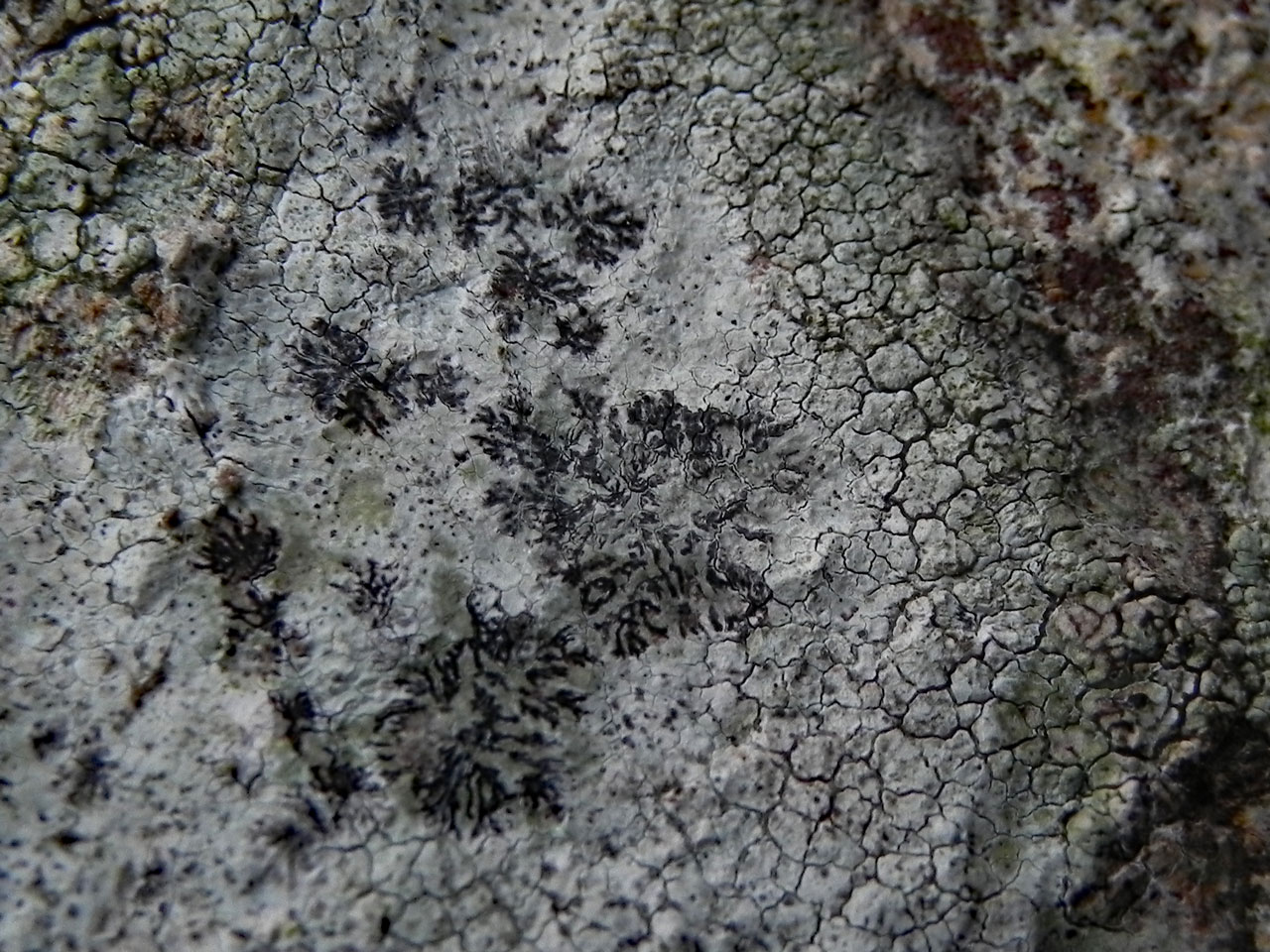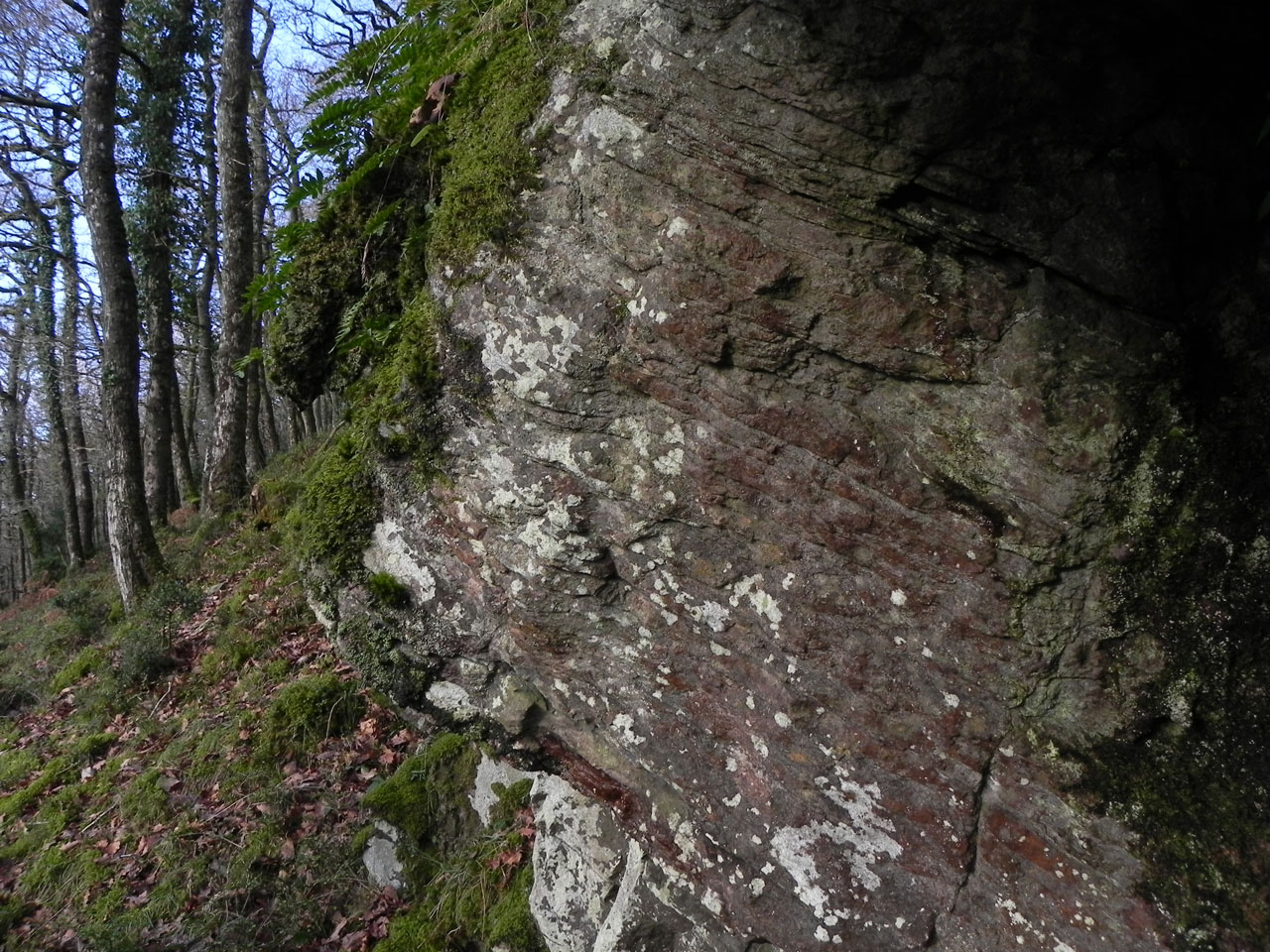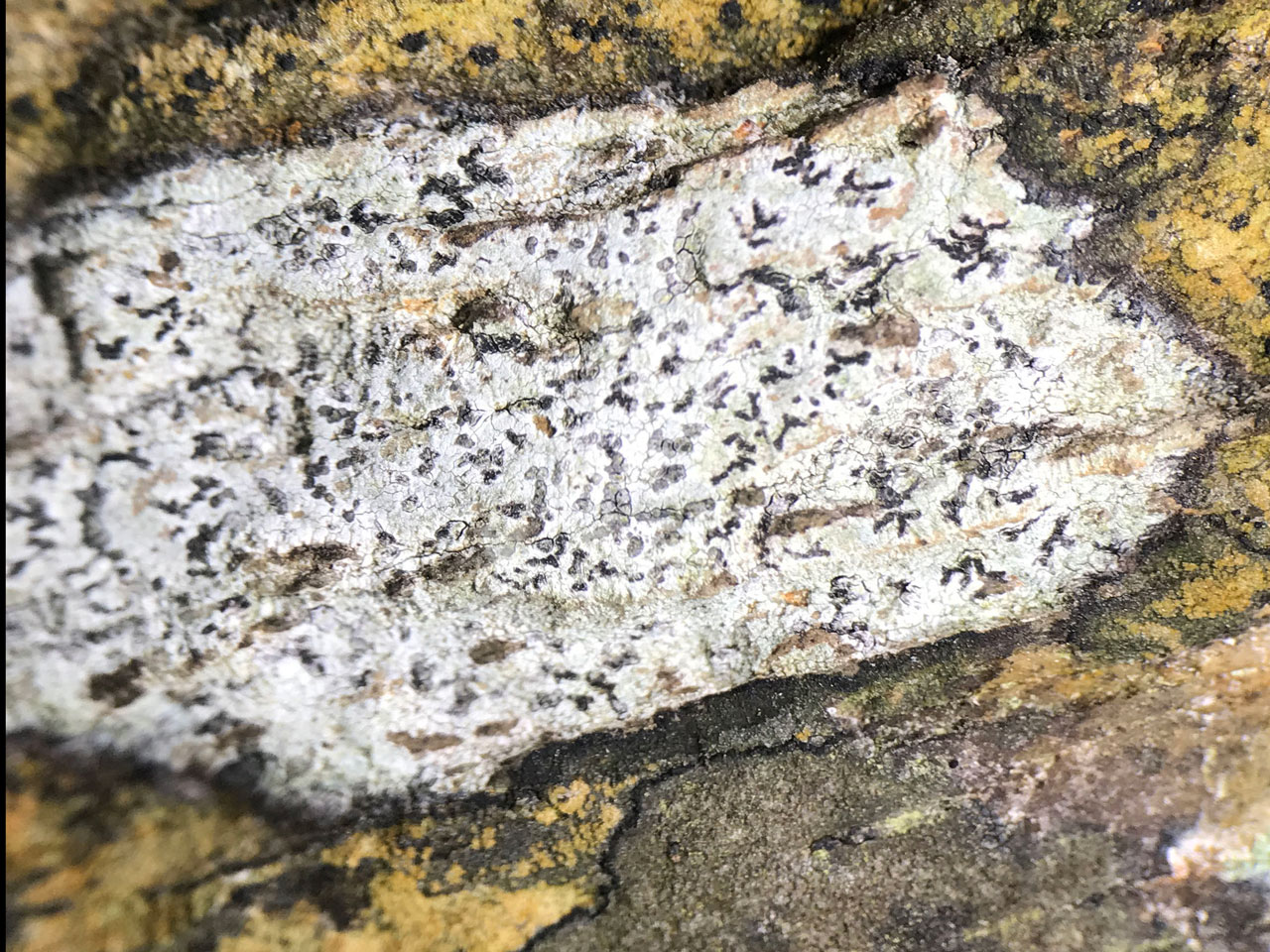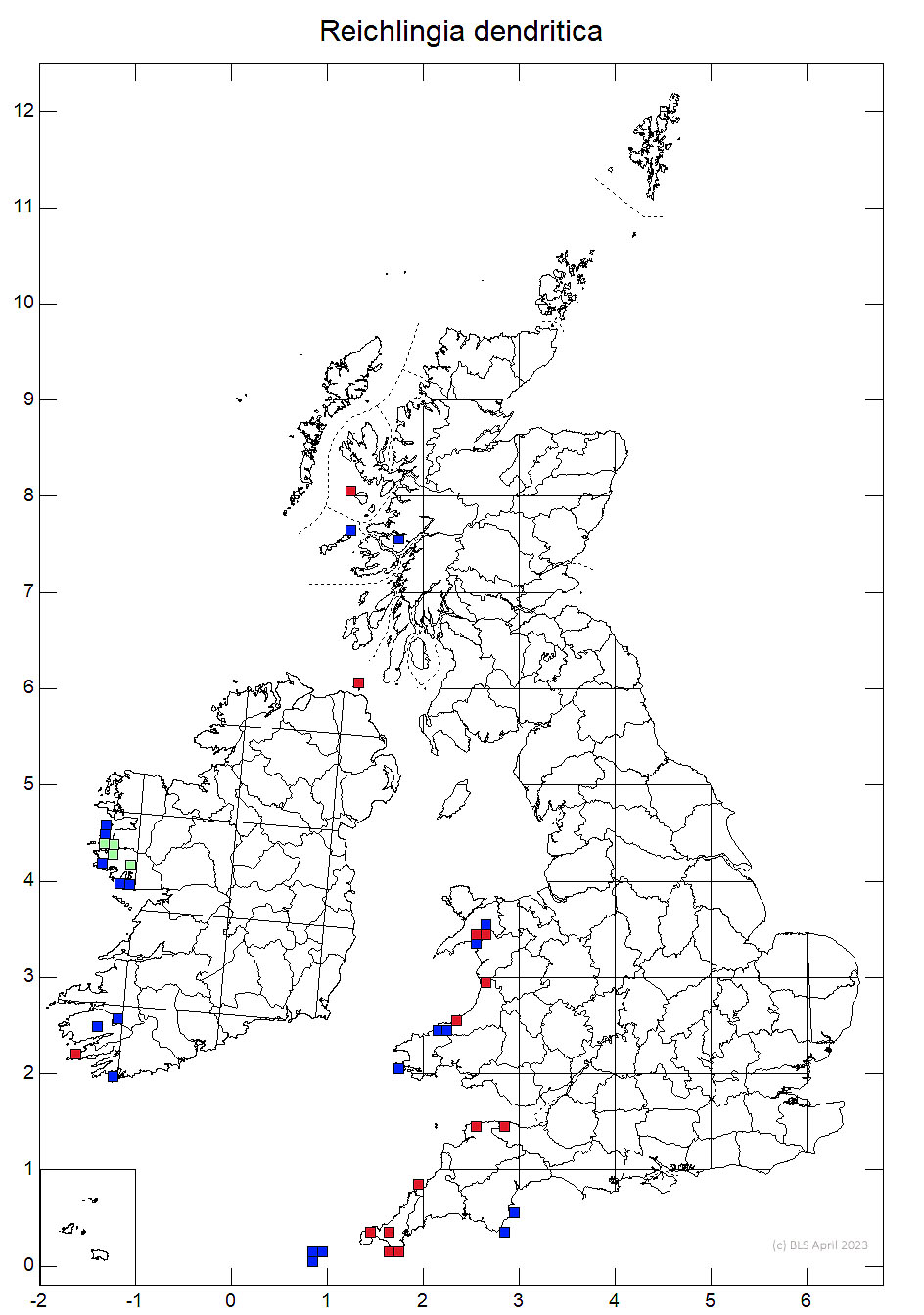Reichlingia dendritica
A distinctive rare species with a white to pale grey thallus and stellate to reticulate black apothecia, resembling an Enterographa species. Growing on hard siliceous rocks below overhangs and sheltered sides of old walls, in transitions from Enterographa zonata – Gyrographa gyrocarpa communities to more exposed rock communities, in slightly flushed overhanging rock faces. Confined to the west and south coasts of Britain and the west coast of Ireland. Some populations in habitats from which former extensive grazing has been withdrawn are threatened by shade from Ivy overgrowth.
Thallus effuse or forming mosaics with other species, white to pale grey, matt, often thin (to 0.5 mm thick) and cracked-areolate, sometimes thinly arachnoid in places; medulla white, densely packed with minute crystals. Apothecia ± immersed, irregularly rounded (to 0.2 mm diam.) but more usually elongate (to 1.2 × 0.08–0.16 mm) or ± stellate, often joining to form an irregular reticulum, brown-black, but often thinly white-pruinose; epithecium red-brown, K+ grey-brown; hymenium 40–50 μm tall, ± colourless; hypothecium sometimes extending down to the substratum, pale red-straw or sometimes with red-brown patches (especially at the outer edge); paraphysoids 1–1.8 μm diam.; apices with dark caps. Ascospores 16–24 × 6–7 μm, (2–) 3- or 4- septate, cylindric-obovoid, the apical cell enlarged; old ascospores brown and warted. Pycnidia not seen. Thallus C–, K+ yellow, KC–, Pd– or Pd+ pale yellow or red, UV– (confluentic acid, and either atranorin with one or two unidentified compounds [var. atlantica] or stictic acid and unidentified compound [var. positiva P. James (1978)].
Confirmed as a species of Reichlingia by Ertz et al (2020). Superficially like Enterographa, but distinguished by the shape of the ascospores. Roccellographa circumscripta differs in the Pd+ deep yellow thallus and dark brown, 4- to 7-septate ascospores.
On hard siliceous rocks below dry overhangs and sheltered sides of old walls, usually on or near the coast but also on rock faces in subcoastal woodlands. Typically found in edges of Enterographa zonata – Gyrographa gyrocarpa communities in slightly flushed overhanging rock faces.

Rare, S.W. England (Cornwall, Devon, Somerset), W. Scotland (Coll), S.W. & N.W. Ireland (Killarney, Mayo, West Cork), N. & W. Wales
In Wales, several woodland populations are threatened by loss from Ivy overgrowth following removal of traditional extensive grazing from ancient pasture woodland sites, populations in still grazed woods are thriving (Orange & Chambers 2017 & Sanderson, 2020)
Britain: Near Threatened & International Responsibility species
England: Section 41 species
Wales: Near Threatened & Section 7 species
Scotland: Priority Taxon for Biodiversity in Scotland
Cannon, P., Ertz, D., Frisch, A., Aptroot, A., Chambers, S., Coppins, B. J., Sanderson, N. A., Simkin, J. & Wolseley, P. (2020) Arthoniales: Arthoniaceae, including the genera Arthonia, Arthothelium, Briancoppinsia,Bryostigma, Coniocarpon, Diarthonis, Inoderma, Naevia, Pachnolepia, Reichlingia, Snippocia, Sporodophoron, Synarthonia and Tylophoron. Revisions of British and Irish Lichens 1: 1 - 48
Ertz, D., Aptroot, A., Sanderson, N., Coppins, B., Van den Broeck, D. & Diederich, P. (2020). A new species of Synarthonia from Luxembourg, and a new combination in the genus Reichlingia (Arthoniaceae). Lichenologist 52: 261-266.
Orange, A. & Chambers, S. P. (2017) A Lichen Survey of the Teifi Gorge, with Special Reference to Three Section 7 Species. Evidence Report number 212. Natural Resources Wales
Sanderson, N. A. (2020) An Epiphytic Lichen Survey of Coedydd Maentwrog NNR, 2018 & 19, Meirionnydd. A report by Botanical Survey & Assessment to Natural Resources Wales.
Text by Neil A Sanderson, based on Cannon et al (2020)
